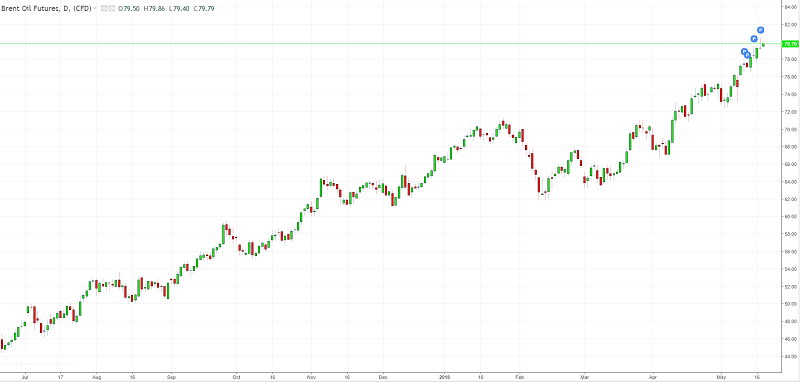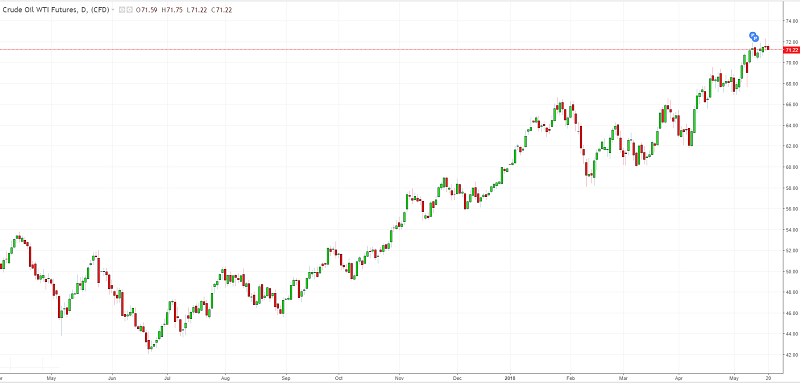Oil is in the arena
Oil is always the hottest topic. Other markets may be steady, however, the oil one never is. Since February 2018 crude is surprising with a significant rise. In the middle of May, it managed to reach the highest levels in more than 3 years. Brent tested above 80 dollars, WTI was above 72 dollars.
There are three the most important drivers of oil prices - geopolitics, demand, and supply. Let’s have a look at all of them in the context of present days.
The oil market was highly boosted by the US withdrawal from the Iranian nuclear deal. Moreover, the US president Mr. Trump declared sanctions on Iran and countries that will support the Iranian oil exports. Iran is the third-largest OPEC producer. Sanctions will lead to a cut of the Iranian supply and as a result to higher prices.
Let us remind you that a cut of the supply in Venezuela led to the oil’s rise as well. On Sunday, May 20, an election of the Venezuelan president will take place. It is an additional risk for the Venezuelan oil as the US may impose more sanctions if it considers that results of the election were falsified.
It is worth saying that OPEC and its allies have finally succeeded in their 16-month campaign and cut the oil supply. Moreover, inventories fell below their five-year average for the first time since 2014.

As you can see, both oil benchmarks are correlated. Whether one of them moves up, another one is supposed to move upward as well.

Up to now, there are disputes on the future of the oil prices.
On the one hand, the International Energy Agency cut forecasts for a global oil demand growth in 2018 as high oil prices always weight on demand. Moreover, the IEA increased estimates for supply from OPEC’s rivals. For example, the US production will grow by 1.87 MMbpd this year, or 85,000 bpd more than previously thought. According to such forecasts, the crude’s prices are supposed to decline.
On the other hand, however, forecasts for the oil’s prices are increasing.
- Morgan Stanley increased its forecast from $65 a barrel to $90 in 2020 as demand for diesel and jet fuel will boom on new shipping regulations that will be in force since January 2020. Changes in the regulations will force ships to either install equipment to scrub pollutants from engines or consume cleaner, low-sulfur fuels. Analysts predict shippers to choose the latter, heightening demand for middle distillate products like diesel and marine gasoil, which should trigger a need for more crude.
- Vice chairman of IHS Markit Dan Yergin says that oil prices could hit $85 a barrel by July when demand for gasoline is high.
- Goldman Sachs Group Inc. remains bullish as well. The company says that even American shale won’t be able to make up for potential supply losses that are anticipated because of geopolitical tensions.
Making a conclusion, we can say that oil has good prospects. Despite a low demand’s forecast and an increase of the supply’s forecast of IEA, analysts are sure that there will be more drivers for the oil’s rise in the future.
Tip: as you could notice, geopolitical tensions are great drivers of market’s movement. For example, Middle East tensions always lead to a rise of oil. Such events give a perfect opportunity to trade. Follow FBS analytics to get clues on suitable events to trade on. It's time to trade!